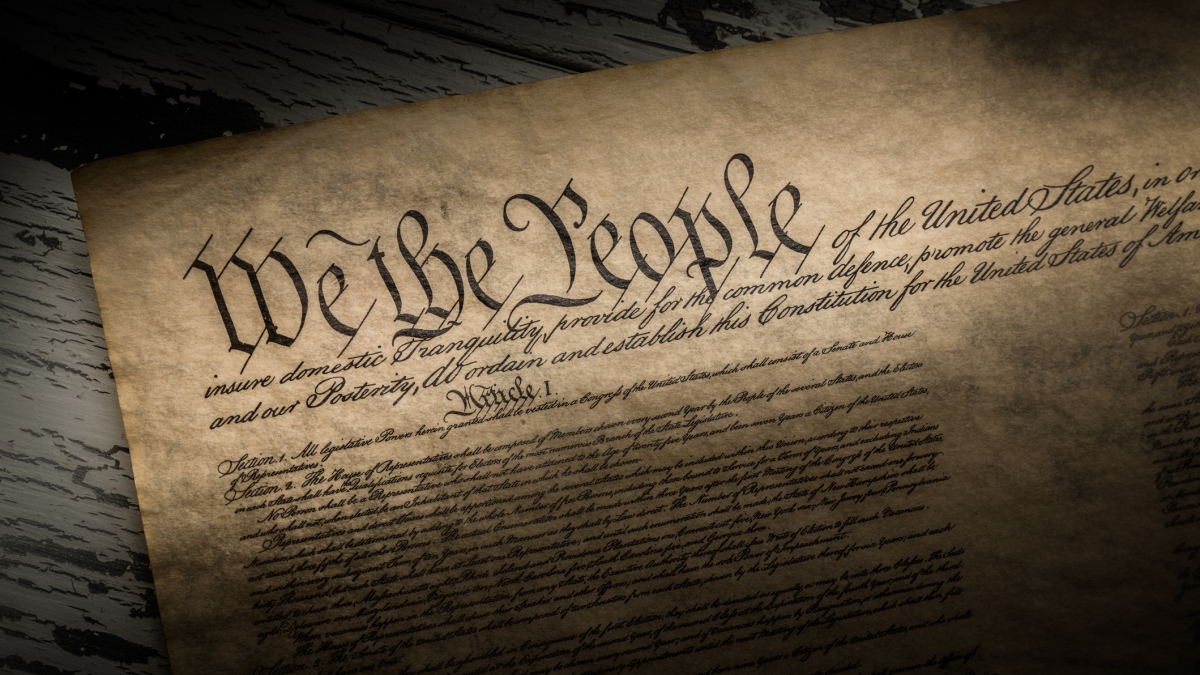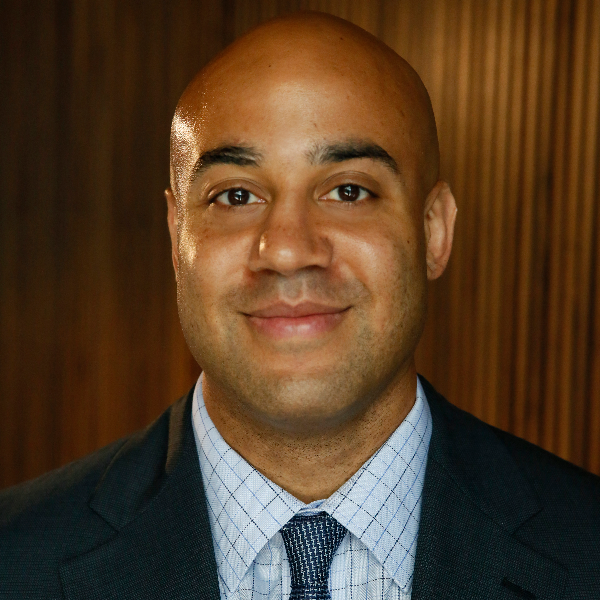A most durable document
ASU Law experts say framers of the Constitution created it with sufficient flexibility to survive for more than two centuries, including pandemics and protests

The United States Constitution is the supreme law of the United States.
It is the most discussed, debated and durable legal document in our nation’s history.
And it’s been getting quite a workout lately.
Issues surrounding COVID-19, protest movements, the Second Amendment, the economy and individual rights have been keeping attorneys and the courts busy these days, putting the centuries-old document to the test. Many are being led to ask, “Is the Constitution still relevant?”
For this combined Q&A, ASU Now reached out to a pair of experts on the U.S. Constitution from the Sandra Day O’Connor College of Law to answer that question: Joshua Sellers, an associate professor at ASU Law, and Stefanie Lindquist, Foundation Professor of law and senior vice president of global academic initiatives at ASU.
Joshua Sellers
Question: What was the intention of the Founding Fathers when they drafted the U.S. Constitution?
Joshua Sellers: The authors of the Constitution sought to create a governing structure that fosters democratic deliberation, guards against factionalism and government abuse, and judiciously allocates power among the three branches of government. More specifically, they addressed many of the flaws in the nation’s first constitution, the Articles of Confederation. Among other shortcomings, the Articles had not established an independent executive and had not given the legislature the power to regulate interstate or foreign commerce. These omissions proved deeply problematic and were remedied in the Constitution.
Stefanie Lindquist: The Constitution was drafted to replace the Articles of Confederation, which failed to create a sufficiently strong central (federal) government following the Revolution. Under the Articles, Congress had neither the power to tax nor the power to raise an army. The lack of a strong central government caused major problems in economic coordination across the new nation as well, since Congress had no power to regulate commerce among the states. The framers realized that a strong federal government was essential for the new nation to thrive. But they also valued the sovereignty of the states and the principle of federalism. Thus they created a new constitutional regime that “split the atom of sovereignty” by providing for a system that accommodated sovereign governments at both the state and federal levels, but that ultimately recognized federal law as supreme.
Q: Some critics have leveled the charge that the Constitution does not hold up well and it is dated. Do you agree or disagree?
Sellers: Many provisions of the Constitution have held up remarkably well. For instance, the process by which a bill becomes a law, outlined in Article I, persists without controversy. By contrast, other aspects, such as the extraordinarily onerous amendment process outlined in Article V, now appear imprudent.
Lindquist: The U.S. Constitution is the oldest written national constitution in the world — surviving for more than 230 years since its ratification in 1789. Compare this longevity to that of constitutions in France, which has had 16 constitutions since the French Revolution in 1789. Hence the longstanding joke that the text of French constitutions may be found in the library’s periodical section. The longevity of the U.S. Constitution reflects the framers’ wisdom in drafting a governing instrument that rejected monarchical rule in favor of representative democracy, and that divided power among the legislature, executive, judiciary and the states so as to immunize the new nation against tyranny. The Constitution’s persistence has also produced major benefits to the nation’s economic development, because it has provided a stable regime with predictable and well interpreted rules that govern the distribution and exercise of power and that preserve the rule of law. Compared to other national constitutions in the world, the U.S. Constitution is also extremely difficult to amend, with only 27 amendments over the course of its history, with the first 10 adopted soon after ratification. Some view the Constitution’s difficult amendment process as a source of rigidity. But the broad and often aspirational phrases in the document — in combination with a judiciary empowered to interpret those phrases in light of changing circumstances — has nevertheless provided the Constitution with sufficient flexibility to adapt and thus survive for more than two centuries.
That is not to say that the document is perfect. For example, some scholars have made persuasive arguments in favor of amending the Constitution to eliminate the Electoral College, or to revise the method of representation in the Senate (now two senators per state). Both of these constitutional requirements fail to account for the actual distribution of population across the states and thus favor smaller and more rural states over larger and more populous ones, both in presidential elections and in policy making.
It is also important to note that, for all its brilliance, the original Constitution also embodied racial injustice: to appease the Southern states in negotiations over representation in Congress, the framers counted Black Americans as only 3/5 of white Americans. (The Constitution does not actually use the word “slave,” instead distinguishing between free and nonfree persons.) It also required the free states to return fugitive slaves (called “persons held to service or labour” in the Constitution) to their slaveholders in the South. The Civil War and the hugely consequential Reconstruction Amendments (13, 14, and 15) eliminated these unjust provisions. Moreover, at the Constitution’s inception, the federal right to vote was largely restricted to property-owning white males. Fortunately, later generations and their representatives saw fit to broaden the franchise to all persons over 18, regardless of race or gender or property holdings.
Q: How has the U.S. Constitution shaped our country over the years?
Sellers: The Constitution has informed virtually all our most notable national events and developments. Everything from westward expansion, to the creation of the federal bureaucracy, to our response on the attacks of Sept. 11, 2001, has a constitutional dimension. Even the contested presidential election between Al Gore and George W. Bush was resolved on constitutional grounds. In short, we are acculturated to thinking about important national disputes in constitutional terms. That tendency demonstrates the immense role the Constitution plays in our country.
Lindquist: The U.S. as a nation is inseparable from its Constitution. The constitutional system of separated powers was established because the framers (in particular Madison) recognized the need to divide power among the coordinate branches and among the states, thus enabling “ambition … to counteract ambition” (in the words of Federalist 51). Separated powers, and checks and balances among the branches, reduce the likelihood that any one branch or any one individual will be able to exercise tyranny over the electorate or to secure a monopoly on power. This was insurance against monarchical or totalitarian rule, and so far, it has worked. The Constitution also embodies a commitment to representative government, on the assumption that individual members of the electorate must and should act as the ultimate check on governmental power through the process of elections. Indeed, the Constitution may be viewed as a “social compact” between the government and the people, with significant checks on governmental power to ensure that the government does not infringe certain inalienable rights (such as free speech) that are critical to effective democratic self-governance and to human dignity.
One might also ask how the country has shaped the Constitution. Demographic and economic shifts over time have also caused major shifts in our system of government, and constitutional doctrines have often been adapted to accommodate these shifts. For example, urbanization and industrialization created the need for a regulatory state and for the supervision of the economy by administrative agencies to, for example, prohibit monopolistic practices among firms, preserve the environment, and protect workers’ safety. This trend has produced a vast federal bureaucracy that would likely have come as a significant surprise to the framers, and that has greatly increased the power of the executive branch relative to the legislative branch.
Q: The Constitution certainly seems to have relevance as of late, especially in regard to the right to protest, the right to vote, the right to bear arms, and the right not to be discriminated against. How, as a society, should we be inspired by the framers and the Constitution? What do you think they would say about the current events unfolding?
Sellers: I believe we should be sober-minded about the framers. On the one hand, they were brilliant in constructing a form of government that has endured. That is an exceptional feat worth celebrating. That said, they were elitists who revered private property, mistrusted the public, and, in many cases, held slaves. Their legacy is multifaceted. Speculating about what the framers would say about current events is a parlor game. It is worth noting that they failed to anticipate the significance of political parties. That oversight, perhaps more than any other, makes it hard to guess what they would think about the present, when partisanship is such a strong identity marker and informs individuals’ decisions on everything from what to read to what to drive.
Stefanie Lindquist
Lindquist: The Constitution is always relevant to our politics and to our society, but at some times in our history, particular provisions rise to unique prominence. We now stand at a point in our history where certain constitutional clauses are often highlighted in the news: the First Amendment’s freedom of speech and assembly, the Second Amendment’s right to bear arms, the Emoluments Clause, the power of Congress to subpoena witnesses and documents, the power of the president under Article II, the independence of the judiciary. These issues have given rise to a broad popular dialogue among the electorate about our constitutional freedoms and about constitutional constraints on power. That dialogue is essential to a healthy democracy.
On current events: Many of the framers from the northern states appreciated the evils of slavery and in 1807, the U.S Congress criminalized slave trade to the United States. Benjamin Franklin’s last public act was to petition Congress to abolish slavery, calling upon Congress to remove “this Inconsistency from the character of the American People.” Some of the framers, therefore, likely understood the deep wounds that slavery and its lasting legacy would cause to the nation. They might not be surprised at the troubling and enduring consequences of that horrific institution that persist to this day.
Q: In your Constitution Law course, what do the students tend to appreciate the most as a takeaway? How does your course lay the foundation for their career in the legal sector? How does learning constitutional law change a student?
Sellers: I like to think that studying constitutional law makes one a better citizen. The course materials improve one’s historical knowledge, critical reasoning skills, and general appreciation of the American experiment. These are attributes that every lawyer should cultivate. The course is also ever-changing, with new Supreme Court decisions to consider. This keeps students engaged and makes the course enjoyable to teach.
Lindquist: I hope my students come away from the class understanding that the Constitution and the courts’ constitutional interpretations are historically contingent. One simply cannot fully understand constitutional law without understanding the historical events that shaped it: from the Revolutionary War, to the political and ideological dynamics at the Constitutional Convention, to the Civil War, Reconstruction and Jim Crow, to the world wars and Korea, to Watergate, to the social movements for racial and gender equality, and to the present-day conflicts over the relative power of Congress and the president. These and many other the historical events serve as the constant backdrop to the evolution of constitutional doctrine and constitutional meaning over time. A great example involves the current debate over presidential power to make law via executive order. President Truman tried to use an executive order to nationalize the steel mills during the Korean War, on grounds that the steel industry was critical to the war effort and that labor unrest by steel workers would undermine the nation’s ability to produce the machinery of war. But the Supreme Court struck down Truman’s steel seizure order as an act that exceeded presidential authority under Article II (in Youngstown Sheet & Tube Co. v. Sawyer (1952)). The Korean War, as well as the history of labor relations, are critical backdrops to this important precedent.
In addition, I hope my students come away from my course understanding that constitutional law is the product of entrepreneurial lawyers and clients who experienced what they saw as a constitutional violation, and litigated cases to address those grievances. Con law cases are cases about real human beings with real lives and problems and grievances. Constitutional law doctrine did not emerge, like Athena, from the forehead of Zeus fully formed. Instead it is a product of individuals’ commitment, ingenuity, creativity, and perseverance. Brown v. Board of Education is a great example of this — with Thurgood Marshall and the NAACP tirelessly pursuing a litigation strategy to overturn the doctrine of separate but equal under the Fourteenth Amendment.
I also emphasize that, as lawyers, my students will have the power and the obligation to protect the Constitution and the freedoms it preserves. That is a huge obligation shared by all citizens, but one that, as lawyers, they will be uniquely positioned to fulfill.
Top photo from iStock Photos.
More Law, journalism and politics

CBS News president to give keynote address at Cronkite School’s spring convocation
Ingrid Ciprián-Matthews, president of CBS News, will serve as the keynote speaker at Arizona State University’s Walter Cronkite School of Journalism and Mass Communication spring 2024 convocation. …

School of Politics and Global Studies director's new book explores mass violence
Why do people commit atrocities and why are certain groups, including religious and ethnic, more vulnerable to large-scale violence? These questions are explored in a new book by Güneş Murat Tezcür…

ASU faculty contributing to improvement of Wikipedia
Many academics have a love-hate relationship with Wikipedia. While the website has information about almost anything you can imagine, the credibility of that information is sometimes suspect. Tracy…

